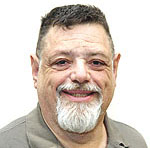‘I’ ON CULTURE
Inequality of wealth is a prime issue in this election because since 1970, the gap between the really wealthy and the poor has increased sharply. One aspect, not often noted, is that inequality in education among the root issues of the problem. Science fiction and education writer Jerry Pournelle has pointed out that without a good education, the vast majority of young people will not succeed and that the public educational system around the country is failing them.
I thought of that when I read that Matt Damon and his wife attempted to put their children into an exceptional private school in Brooklyn. The yearly tuition there ranged between $36,000 and $42,000, and that was before extra costs such as for meals, books and cultural events were added on.
Compare that with the $9,139 per student spent last year in Palm Beach County, which was higher than just about everywhere else in Florida. Add to the difference the far higher costs of educating special-education students, who do not attend the private schools, as well as transportation costs and at least some of the costs of feeding the children, and the difference grows further.
I had a friend who taught at a similar private school up in New York. The second grade, the one she knew best, had 36 children. There were two teachers and four paraprofessionals assigned, seemingly not all that different than at a public school. But all six of the people assigned had master’s degrees in education, and two had doctorates. Any one of them was a qualified teacher. That allowed closely supervised small group work.
There was also a reading teacher assigned who worked only with the first and second grades, a total of 72 students. In public schools, the caseload is often in the hundreds, and many of the students have problems. In the private school, if a student just appears to have a problem, there was immediate assistance. There was a math specialist who worked only with the second and third grades. Beginning in the third grade, students were taught Spanish and had daily classes in the subject.
There were also teachers in the arts. With only about 400 students, every student got a lot of attention at my friend’s school. There were a half-dozen physical education teachers, and students were not only given workouts that were beneficial but taught sports that would be useful in later life (all students were taught tennis, and there were tennis courts on the roof of the school building), as well as ones that would attract interest in college. Students were pushed very hard to do very well, far better than those competing with them for spots at the best colleges. There were even specialists in the school to get them internships with different charities to improve their chances, and writing specialists to assist them on their college applications.
Students in public school get far less support. Of course, there are many students who do very well even without the kind of support that private school students receive. But, with the best of intentions, the schools are failing them.
It was decided more than 20 years ago that students with learning disabilities should, wherever possible, be in the same classes that students without the disabilities take. It feels very good, very right, to argue for that kind of equality, and often our weakest students do perform better that way. Most teachers, however, will freely complain, when out of hearing of administrators, that these students also can hinder the progress of others. Teachers must slow down the classroom learning process to allow more students to catch up. And those who do not succeed often become bored and resentful and create classroom management problems.
Added to that, schools have loosened disciplinary control. When most older adults went to school, cursing and/or threatening another student would bring suspension. Currently, students casually curse, taunt and occasionally threaten teachers, and often nothing is done.
We should also add the dumbing-down of the curriculum in the public schools. In the private schools, students still learn Shakespeare, chemistry and physics. In the public schools, there are always other options.
Glenn T. Seaborg, who led a committee that reviewed the problems of the schools, wrote that if a foreign nation had imposed the education system we now have on us, it would be a cause for war.
We need to do better, or the inequality will just increase. And guess what? From what I have seen, most of the education decision-makers send their children to private schools.






